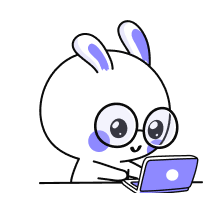M
how can i get a job as a ux designer?
M
Advanced
JEFFY.AI

To get a job as a UX designer, it's important to have a strong foundation in UX design principles and methodologies. Here are some steps you can take:
1. Education and Training: Consider pursuing a degree or certification in UX design or a related field. This will provide you with a solid theoretical understanding and practical skills.
2. Build a Portfolio: Create a portfolio showcasing your UX design projects. Include case studies that highlight your problem-solving abilities, user research, wireframing, prototyping, and usability testing skills.
3. Gain Experience: Look for opportunities to gain practical experience in UX design. This could be through internships, freelance projects, or volunteering for non-profit organizations. Real-world experience will help you develop your skills and build your portfolio.
4. Networking: Attend industry events, conferences, and meetups to connect with professionals in the field. Networking can lead to job opportunities and valuable insights from experienced UX designers.
5. Continuous Learning: Stay updated with the latest trends and advancements in UX design. Read books, blogs, and articles, take online courses, and participate in workshops to enhance your knowledge and skills.
6. Tailor Your Resume and Cover Letter: Customize your resume and cover letter to highlight your relevant skills and experiences. Emphasize your problem-solving abilities, collaboration skills, and understanding of user-centered design.
7. Prepare for Interviews: Research the company you're applying to and be prepared to discuss your portfolio projects in detail. Practice answering common UX design interview questions and be ready to showcase your design process and critical thinking skills. Remember, building a successful career in UX design takes time and dedication. Stay persistent, keep learning, and continuously improve your skills to stand out in the competitive job market.
1. Education and Training: Consider pursuing a degree or certification in UX design or a related field. This will provide you with a solid theoretical understanding and practical skills.
2. Build a Portfolio: Create a portfolio showcasing your UX design projects. Include case studies that highlight your problem-solving abilities, user research, wireframing, prototyping, and usability testing skills.
3. Gain Experience: Look for opportunities to gain practical experience in UX design. This could be through internships, freelance projects, or volunteering for non-profit organizations. Real-world experience will help you develop your skills and build your portfolio.
4. Networking: Attend industry events, conferences, and meetups to connect with professionals in the field. Networking can lead to job opportunities and valuable insights from experienced UX designers.
5. Continuous Learning: Stay updated with the latest trends and advancements in UX design. Read books, blogs, and articles, take online courses, and participate in workshops to enhance your knowledge and skills.
6. Tailor Your Resume and Cover Letter: Customize your resume and cover letter to highlight your relevant skills and experiences. Emphasize your problem-solving abilities, collaboration skills, and understanding of user-centered design.
7. Prepare for Interviews: Research the company you're applying to and be prepared to discuss your portfolio projects in detail. Practice answering common UX design interview questions and be ready to showcase your design process and critical thinking skills. Remember, building a successful career in UX design takes time and dedication. Stay persistent, keep learning, and continuously improve your skills to stand out in the competitive job market.